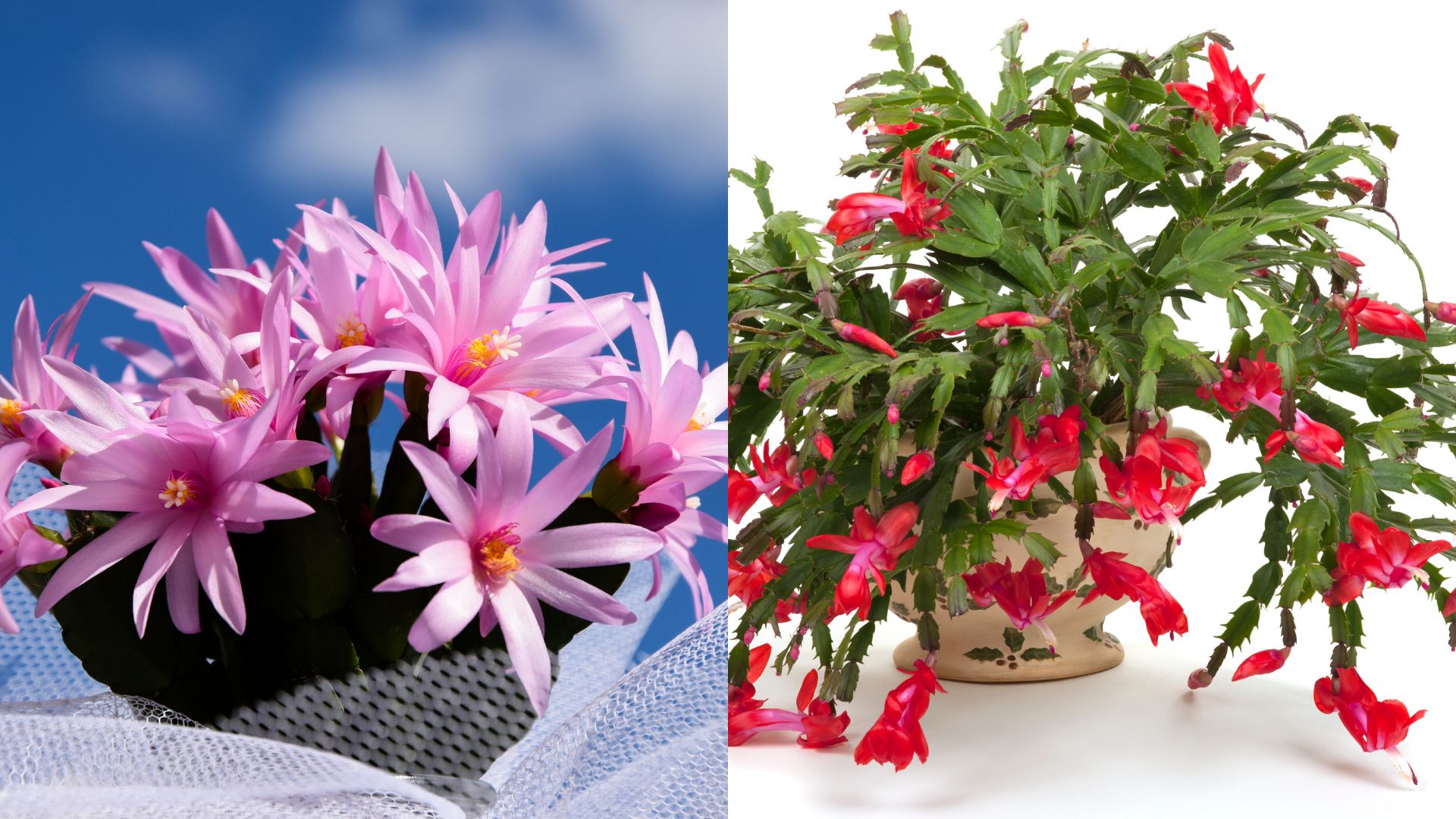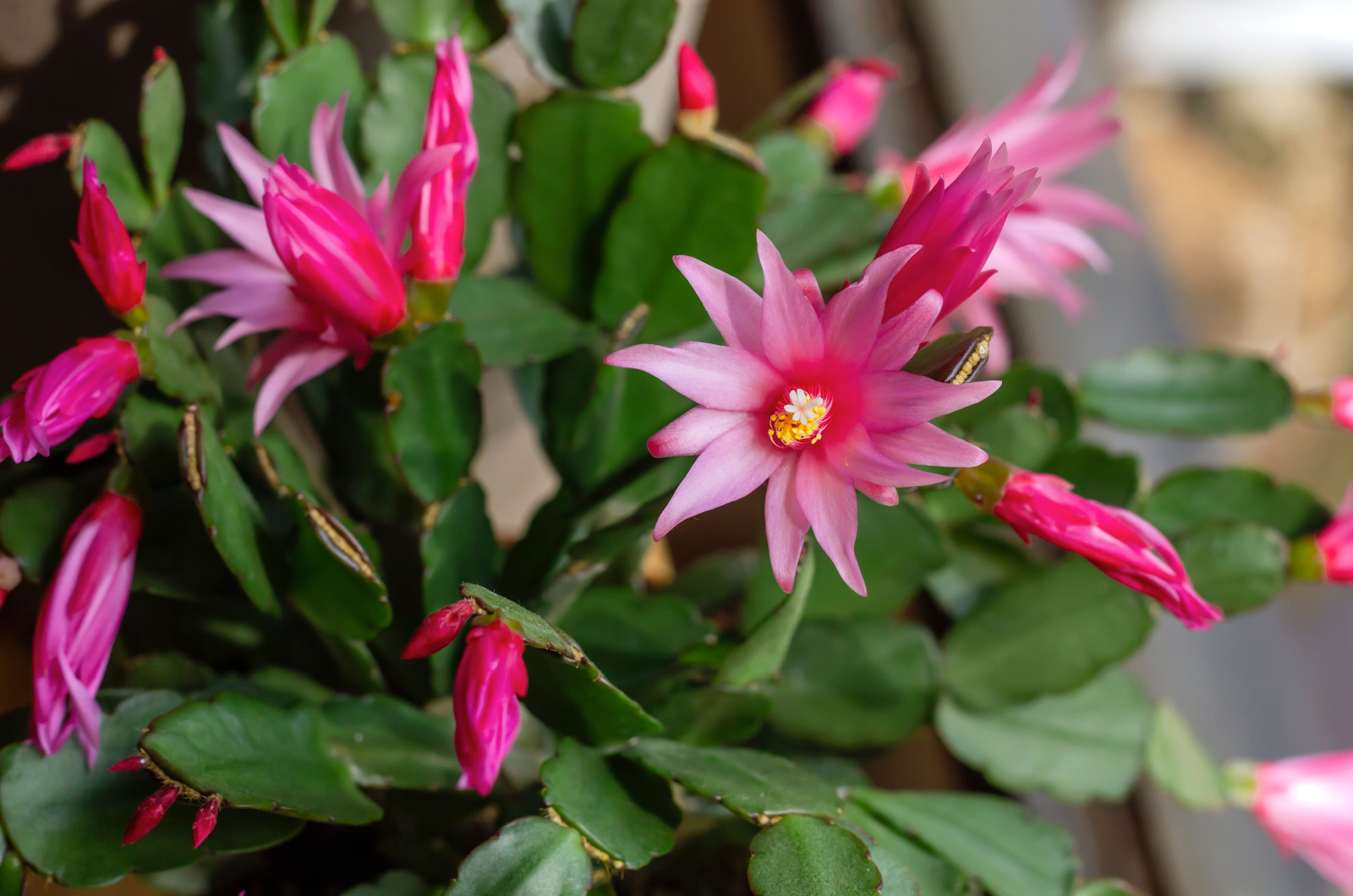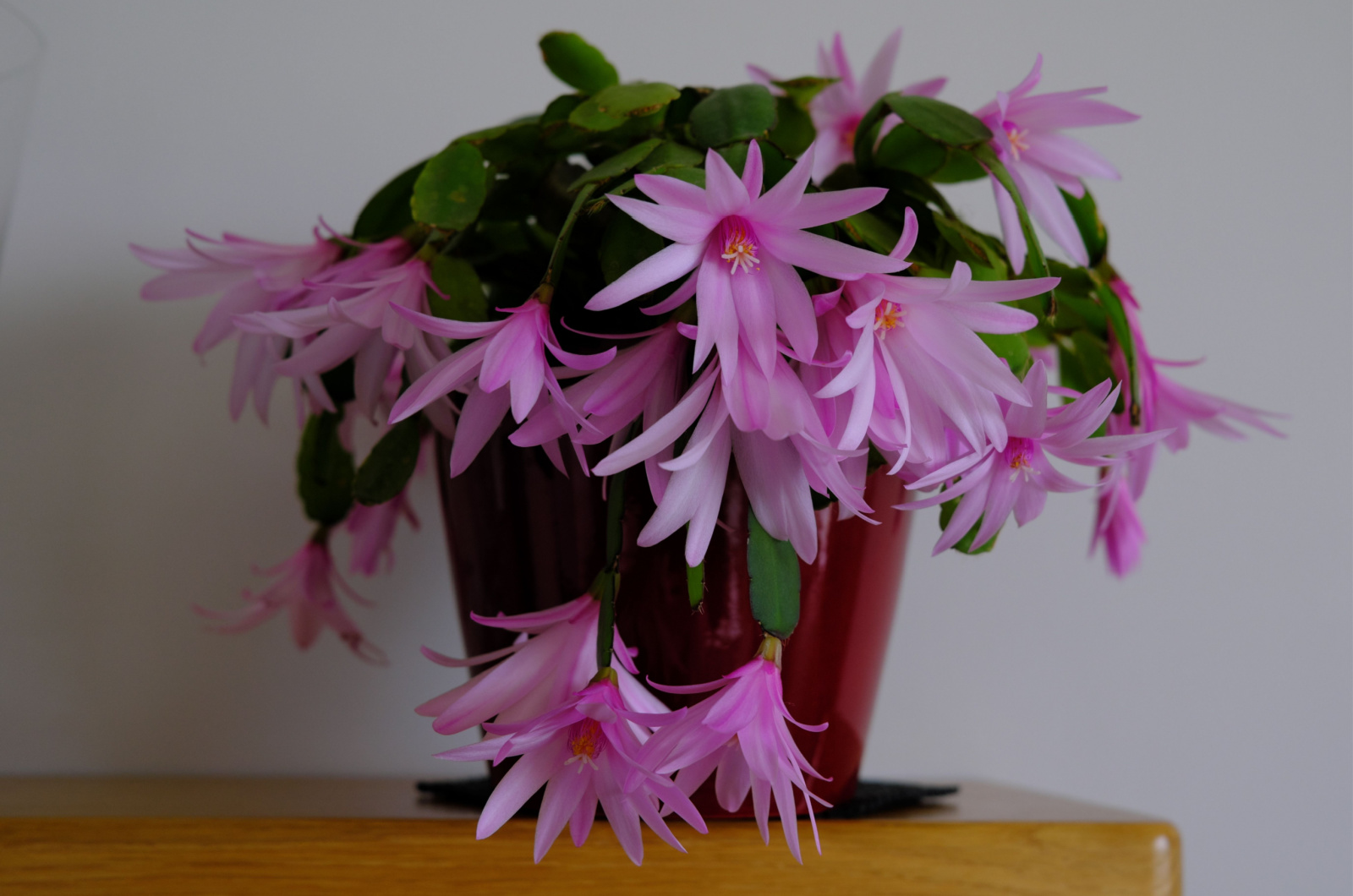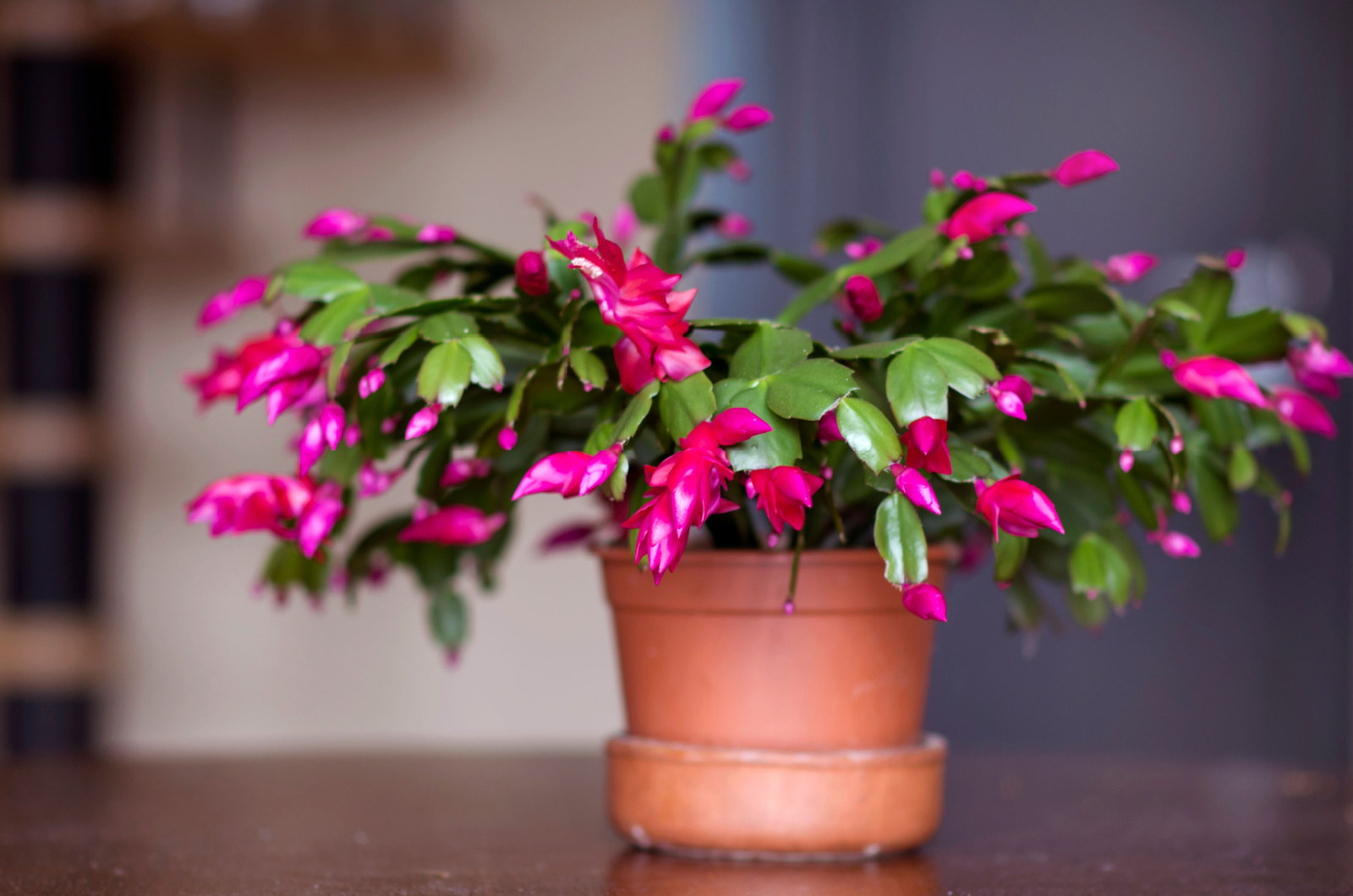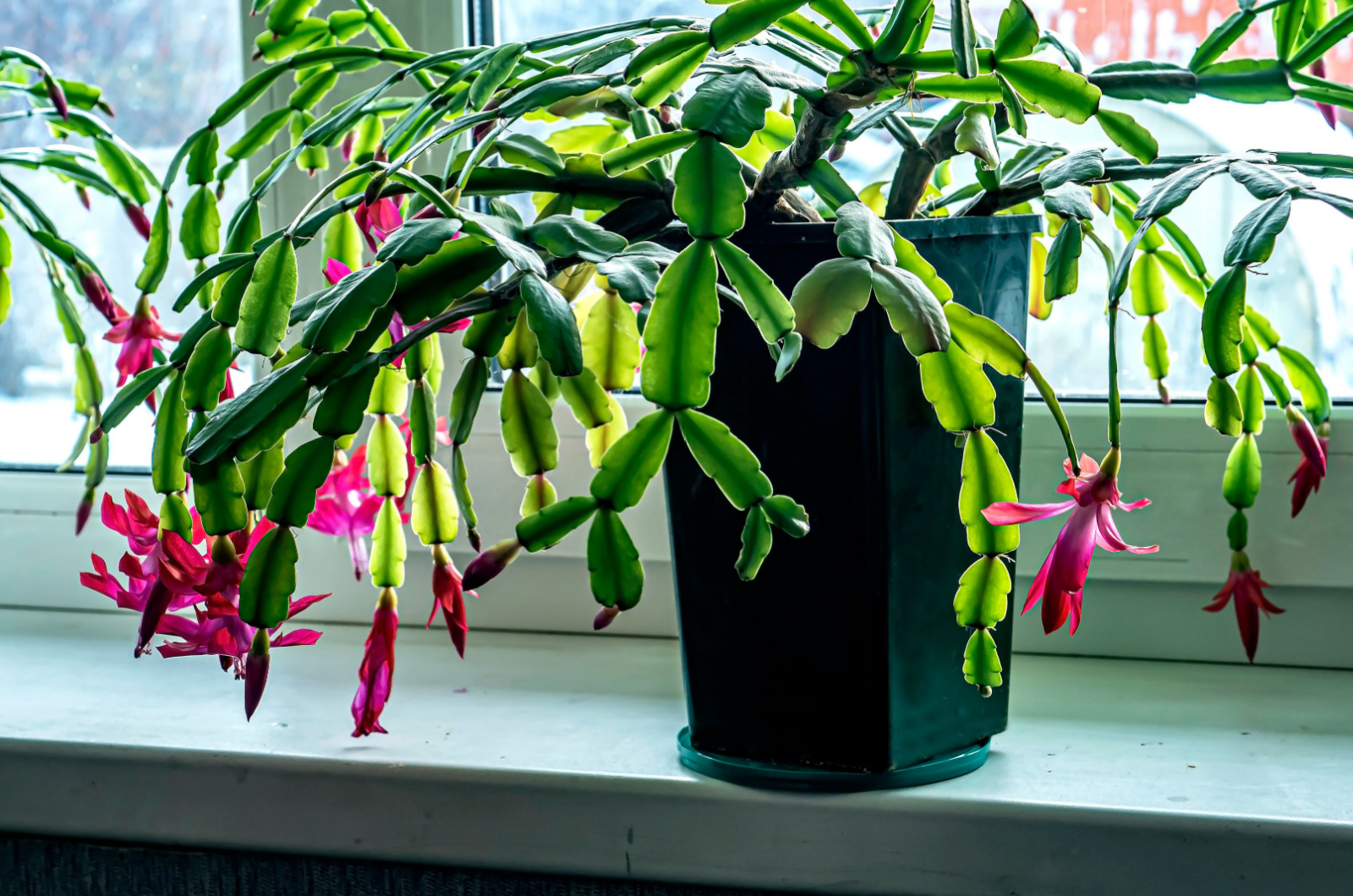Gardeners love the festive season and some plants are actually linked to certain holidays. The best example is the holiday cactuses; a famous trio that includes Thanksgiving, Easter, and Christmas cactus.
Many growers find it hard to differentiate between these three species. In this article, I’ll show you 2 easy ways to tell Christmas and Easter cactus apart. You’ll also see how they differ from the Thanksgiving cactus and how to make all three species bloom abundantly.
Let’s get started!
1. Leaf Shape
When you take a look at both species, it’s really hard to tell the difference between Christmas and Easter Cactus.
So, the first thing you need to do is look at the leaves; the shape of the leaves to be more precise.
The leaves of the Christmas cactus are characterized by scalloped edges. This is actually what differentiates it from both the Thanksgiving and Easter cactuses.
If your holiday cactus has round leaf edges, you have an Easter Cactus. This type of cactus also features small brownish hairs you can see on the leaf tips.
Sharp-toothed leaf edges are the main characteristic of the Thanksgiving cactus. Christmas cactuses do have serrations but they aren’t that prominent.
2. Blooming Season
You can guess the time when these cactuses bloom by their names. So, the Christmas cactus will bloom around Christmas whereas the Easter cactus will display its gorgeous blossoms during Easter time.
The beginning of the blooming season of both plants depends on the period of darkness they experience.
For instance, a Christmas cactus will display blossoms in the early winter if you provide it with at least 12 hours of darkness per day. This period should last for approximately 6 weeks.
Easter cactus needs the same amount of darkness daily but it will need a longer period of short days to bloom. This may take from 8 to 12 weeks.
The blooming season of Christmas cactus typically lasts until mid-winter. Easter cactus displays its first blossoms in late winter and continues blooming throughout the early spring.
However, you can have a blooming Christmas cactus in the spring which contributes to the confusion. So, where’s the catch? Well, you can encourage your cactuses to rebloom if you provide them with the perfect conditions.
This includes meeting basic care requirements and ensuring the period of darkness.
Now that you know how to distinguish between Christmas and Easter cactus, let’s see some maintenance requirements and tips for reblooming!
Tips For Maintaining Holiday Cactuses
If you want healthy and thriving cactuses, there are some basic requirements you should meet.
Let’s take a look at each!
Light
The health of all plants depends on the amount of light they receive on a daily basis. It would be best to mimic the conditions found in the natural environment of the plants.
Holiday cactuses are native to humid rainforests and they grow below taller plants. This means they don’t receive full sun in their natural habitat.
You’ll need to ensure bright but indirect light for your cactuses to grow healthy. You have a couple of options here. You can put your cactuses near sunny windows and if the sun rays can reach the plants, filter the light using sheer curtains.
Artificial lights are a perfect choice if you don’t have a spot that receives enough sun.
Watering
Cactuses are succulent plants, which means they don’t need water as much as other common plants. However, if you want them to thrive, you need to have a perfect watering schedule.
When it comes to Thanksgiving and Christmas cactus watering requirements, the key is to keep their growing medium consistently moist. The surface of the soil must be dry before irrigation.
On the other hand, you should allow the growing medium to dry more if you have an Easter cactus. This species is extremely sensitive to overwatering so it’s better to leave it without water for some time than to waterlog it.
Soil And Fertilizing
The soil requirements of all cactus species are pretty much the same. These plants prefer loose and fast-draining potting mixes.
You can make your own well-draining mix for your holiday cactuses but if you are unsure, the safest way is to purchase a succulent soil mix.
Plants need nutrients and energy to grow and bloom, so you should fertilize your holiday cactuses. I recommend applying complete houseplant fertilizers once a month during the growing season.
Temperature
An important thing to understand about holiday cactus species is that they prefer different temperatures depending on the season.
For instance, you need to ensure a temperature range of 70 to 80 degrees Fahrenheit during the growing season. When your holiday cactuses are dormant, they prefer temperatures from 55 to 60 degrees Fahrenheit.
How To Encourage Blooming In Holiday Cactuses
Our main goal is to encourage our holiday cactuses to bloom during the festive seasons. It’s impossible to see the blooms if you haven’t met the basic care requirements throughout the year. I showed you the maintenance tips so now it’s time to see tips for blooming.
I have to mention that in order to get these species to bloom you need to take these steps while taking into consideration the season.
The first one that blooms is the Thanksgiving cactus, then you can expect the flowers of the Christmas cactus, and finally the display of Easter cactus blooms.
Here’s how to trigger blooming in all holiday cactuses.
Force The Plants Into Dormancy
These cactuses must go through the dormancy period to generate flowers. It most likely won’t happen naturally, so you’ll need to assist it.
The first thing to do is cut back on watering and stop feeding your holiday cactuses. Then you need to find a room where the temperature ranges from 50 to 55 degrees Fahrenheit.
Now the most important step: if you want to trigger your Christmas cactus to bloom, you should keep it in total darkness for 12 to 14 hours. This method works for other holiday cactuses as well.
This process typically takes a few weeks.
Break The Dormancy Period
You should wait until your holiday cactuses generate new flower buds and then transfer them to another spot.
The new spot should receive enough bright indirect light and plants shouldn’t be exposed to drafts.
The flower buds of your holiday cactuses will start opening in a few weeks.
Deadhead
The last step is to deadhead your holiday cactuses, i.e., remove spent flowers. This method will result in a longer blooming season and encourage the production of more blossoms.
Differentiating between plant species can be really difficult sometimes. Holiday cactuses are the perfect example. Now that you know all the differences, make sure to follow our maintenance tips for happy and healthy cactuses during the festive seasons!

